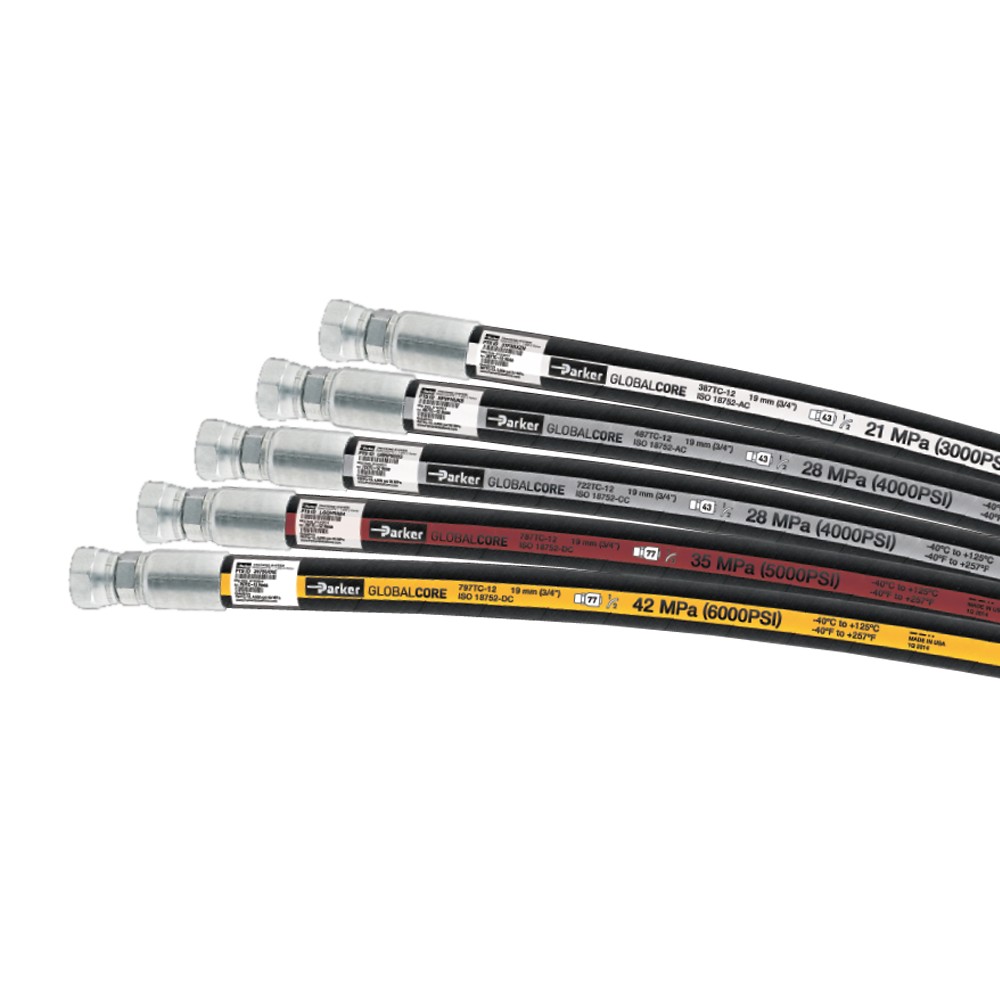The Role and Types of Hydraulic Hoses in Hydraulic Equipment
The hydraulic hose or pipe is responsible for transporting fluid within the system. Selecting the right material, size, and quality is crucial for these products. Proper integration into the system also requires selecting suitable fitting components. Without this, the equipment will not operate efficiently, and, in the worst case, its lifespan may be significantly shortened.
At MPH, you’ll surely find the right hydraulic hose, conveniently selected from our webshop. We also offer custom hose manufacturing to meet specific needs, even within the same day of the order.
Types of Hydraulic Hoses
With over 30 years of experience, our company’s experts are ready to assist you in selecting the right component.
The types we most commonly manufacture are:
-
Single-Braid Hydraulic Hose: The inner rubber layer is covered by an outer layer with a single steel wire braid. It is used in lower-pressure hydraulic systems (control of automatic systems, air hoses, and wash hoses).
-
Double-Braid Hydraulic Hose: This type also has a rubber inner layer, with two steel wire braids in the outer layer for reinforcement. This is the most widely used hose type, commonly found in higher-pressure hydraulic equipment (cranes, forklifts, industrial equipment). One of our most popular products in this category is the 2SNKDN16 hydraulic hose.
-
Four-Braid Hydraulic Hose: Here, the inner rubber layer is reinforced by an outer layer containing four steel wire braids. It is used in extremely high-pressure hydraulic systems where large amounts of fluid need to be transported (excavators, mining machinery, diggers, industrial equipment). The four steel spirals provide strong reinforcement.
The Importance of Selecting the Right Size and Type
Choosing the correct hydraulic hose is critical. If a component is installed that does not match the task requirements or the other parts of the system, it can lead to severe and costly consequences.
If a hose narrower than required is used, it will impact both flow rate and pressure, which may deviate from optimal levels. This reduces efficiency and, in extreme cases, may even damage the equipment.
Smaller Cross-Section, Increased Flow Velocity
The flow velocity can also affect the flow characteristics. Scientifically, flow is classified as either laminar or turbulent. In hydraulic systems, laminar flow—characterized by the parallel, smooth movement of particles—is desirable. This flow type minimizes friction, reduces bubble formation, and ensures the equipment’s efficient operation.
Inappropriate hose selection can easily change the flow to turbulent under accelerated flow conditions, leading to increased pressure and reduced efficiency. In this case, the transported fluid heats up more than ideal, further shortening the equipment’s lifespan.
If you are interested in our hydraulic hose products but still have unanswered questions after browsing our website or would like a personalized offer from our team, please feel free to contact us.


